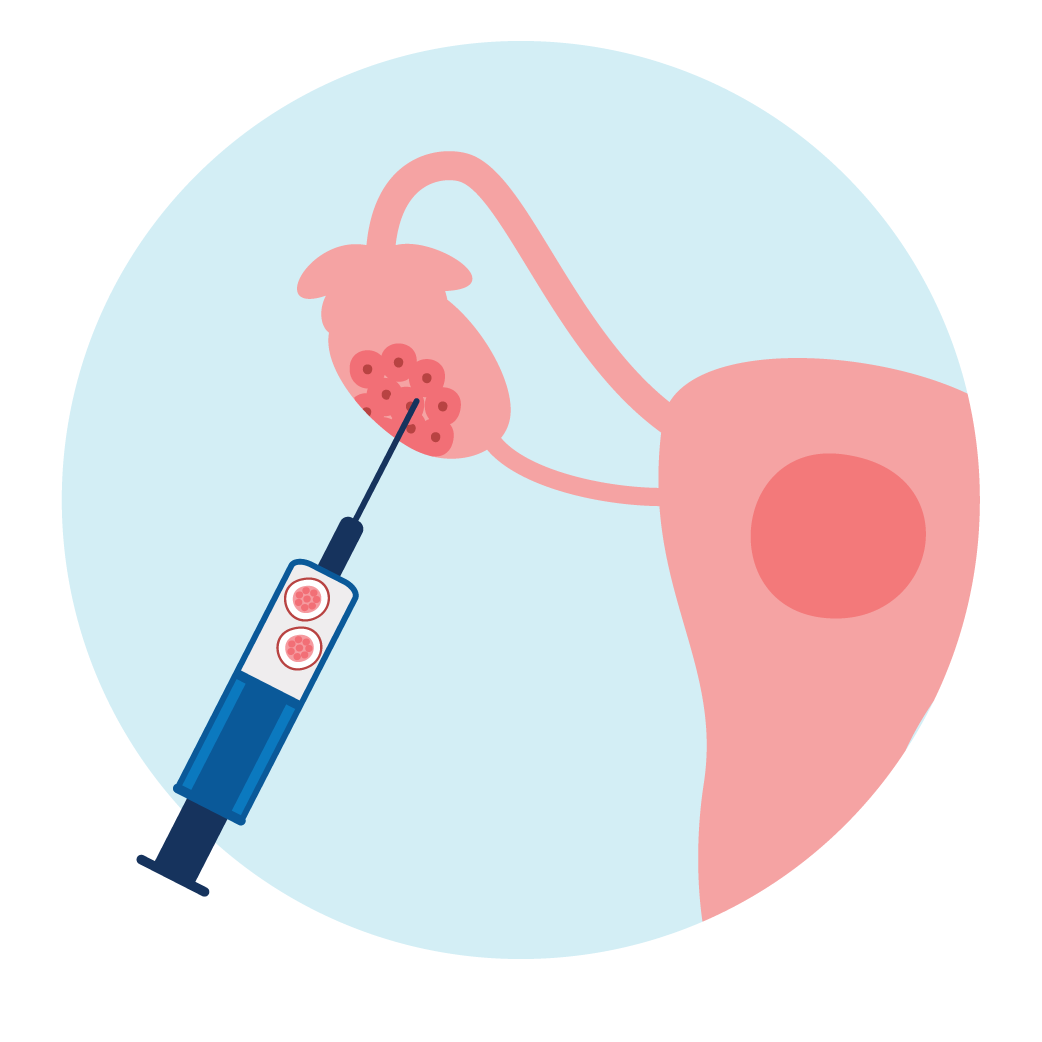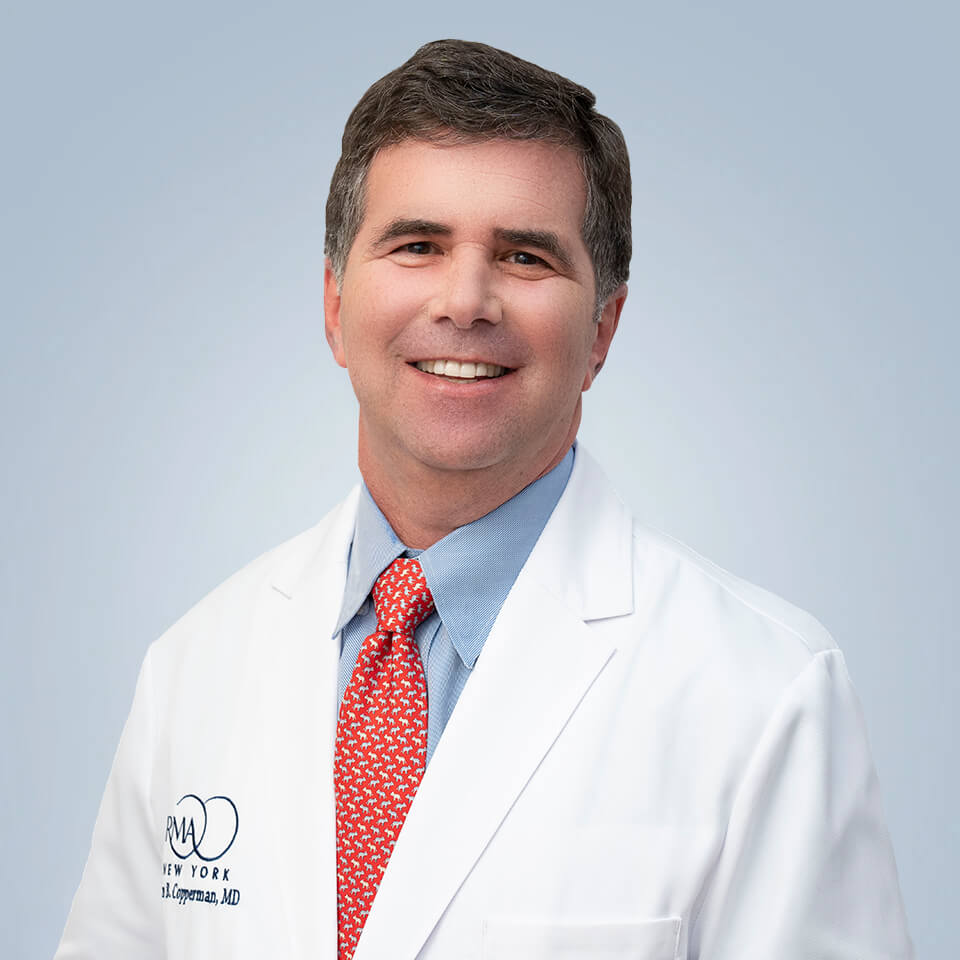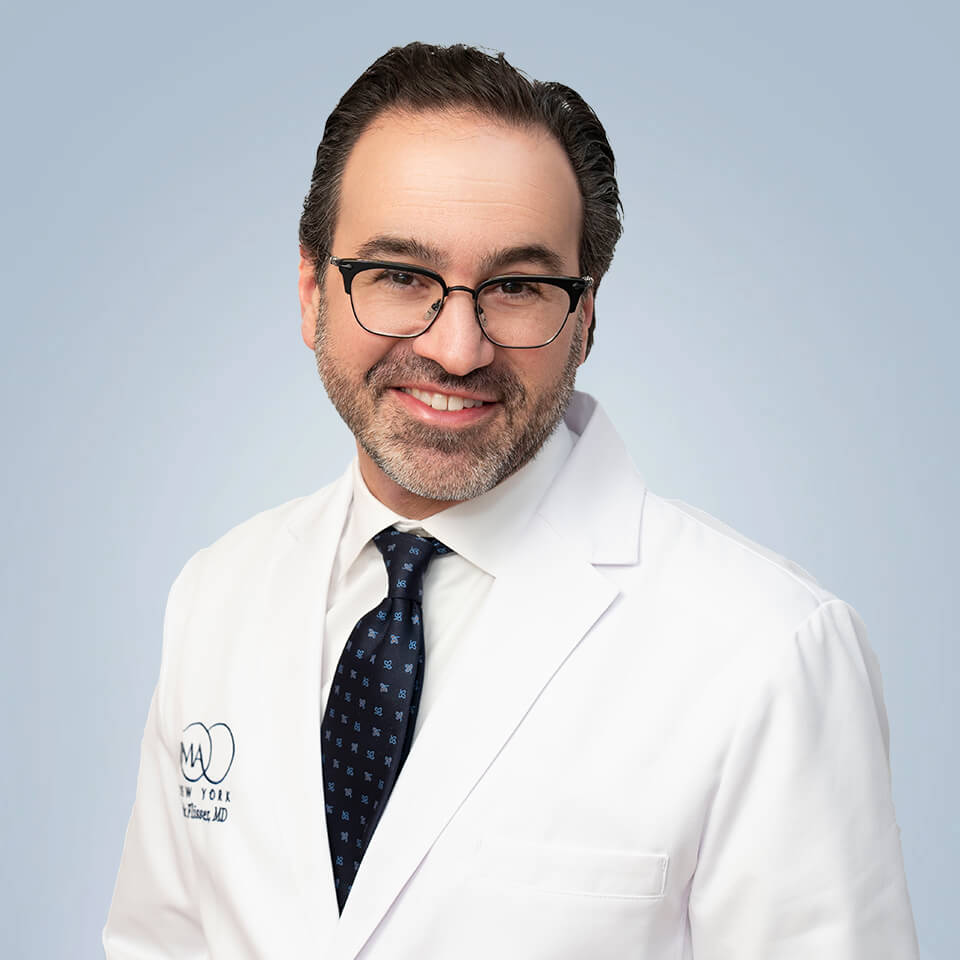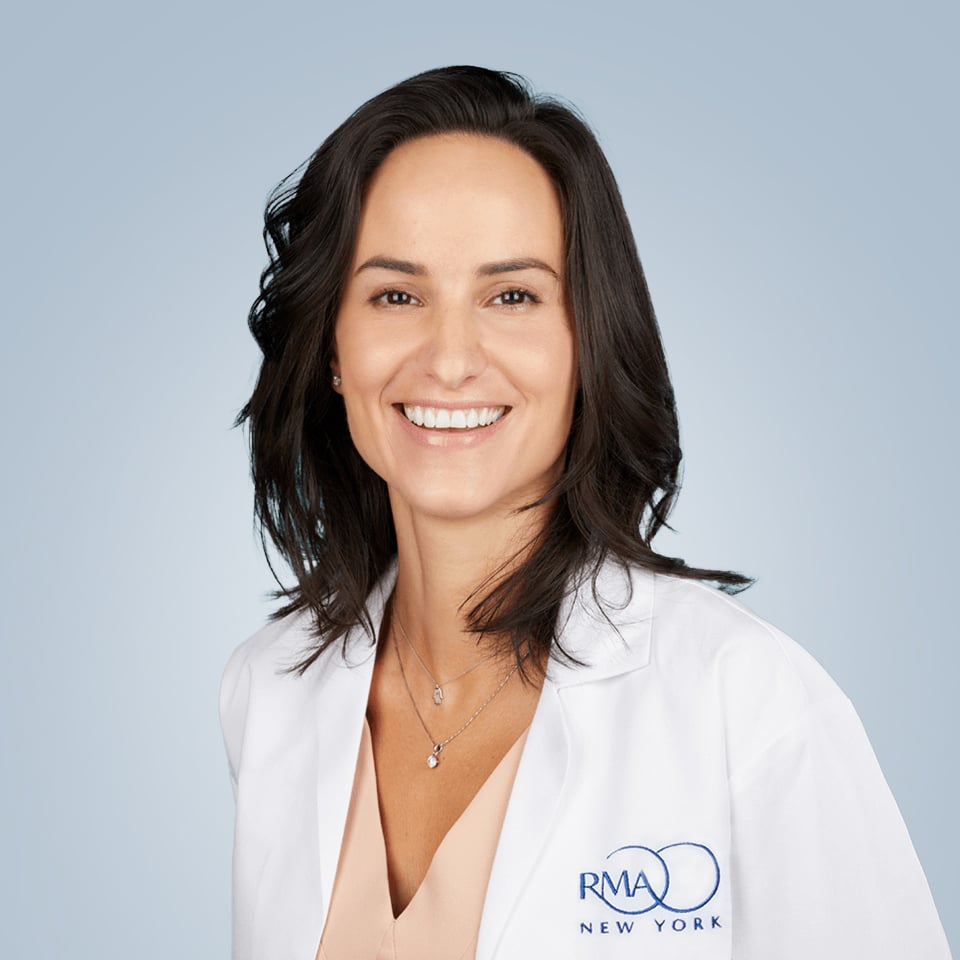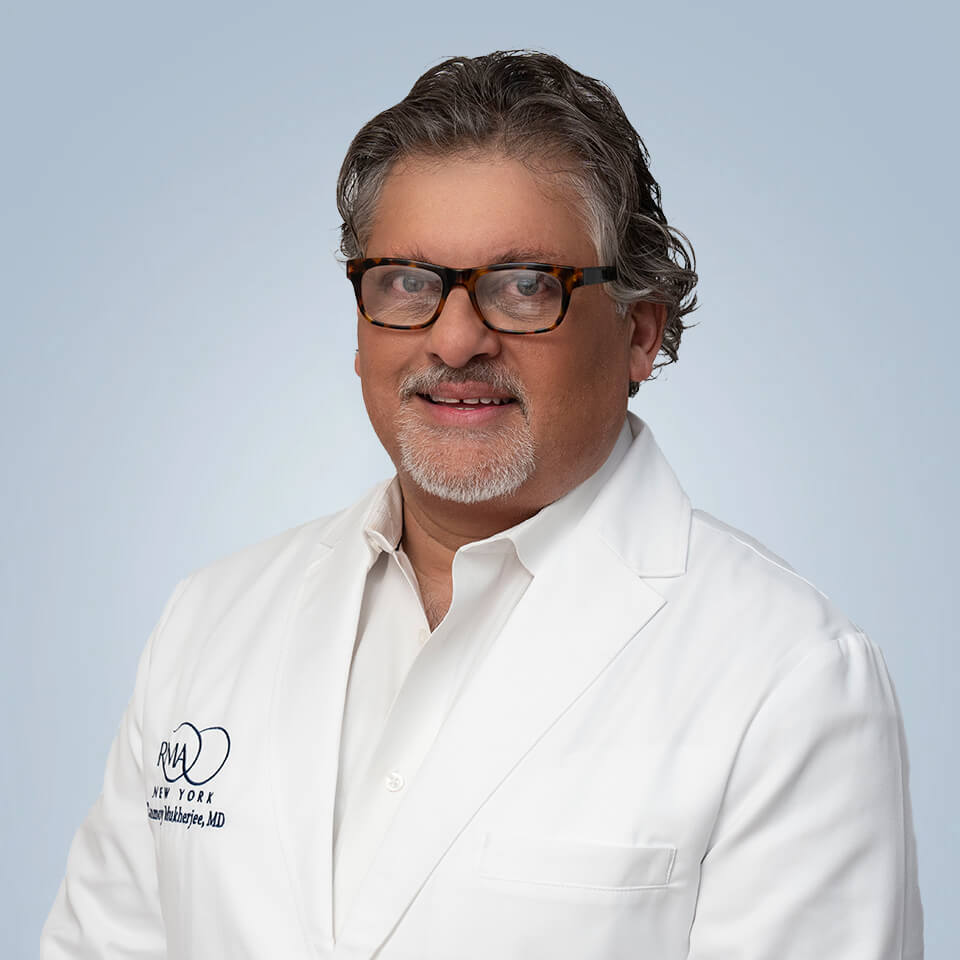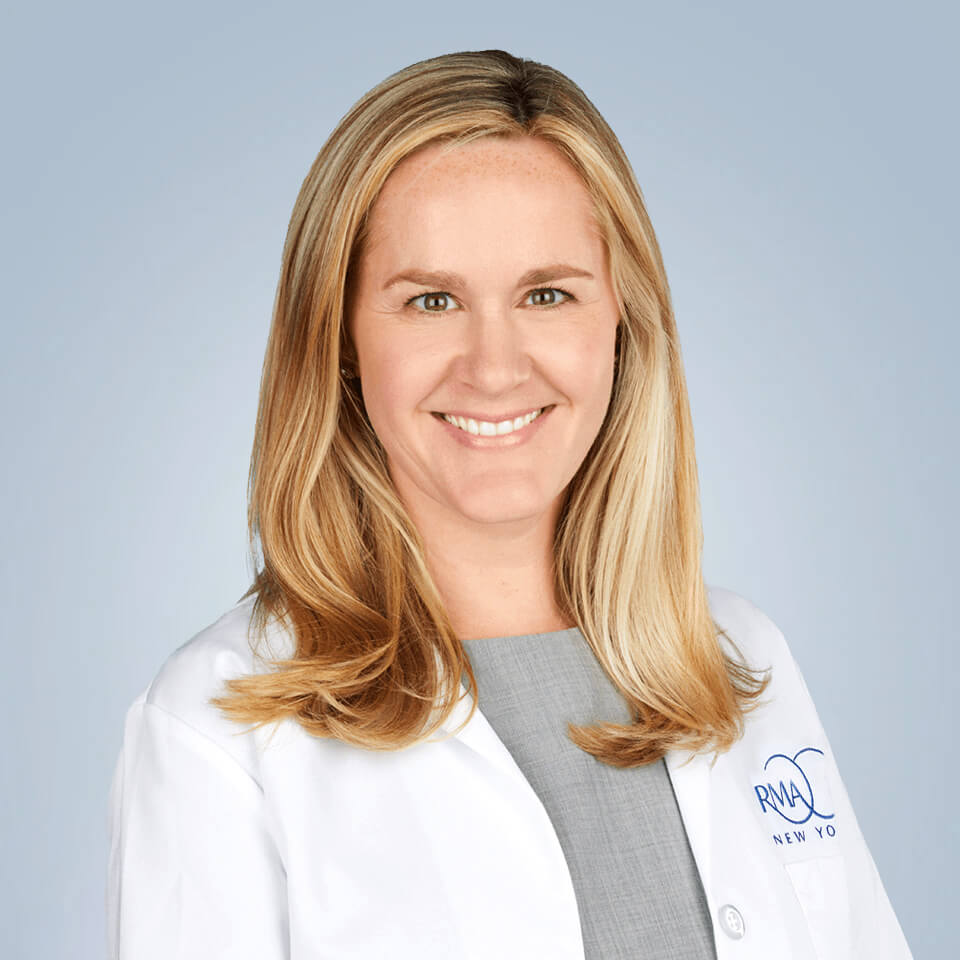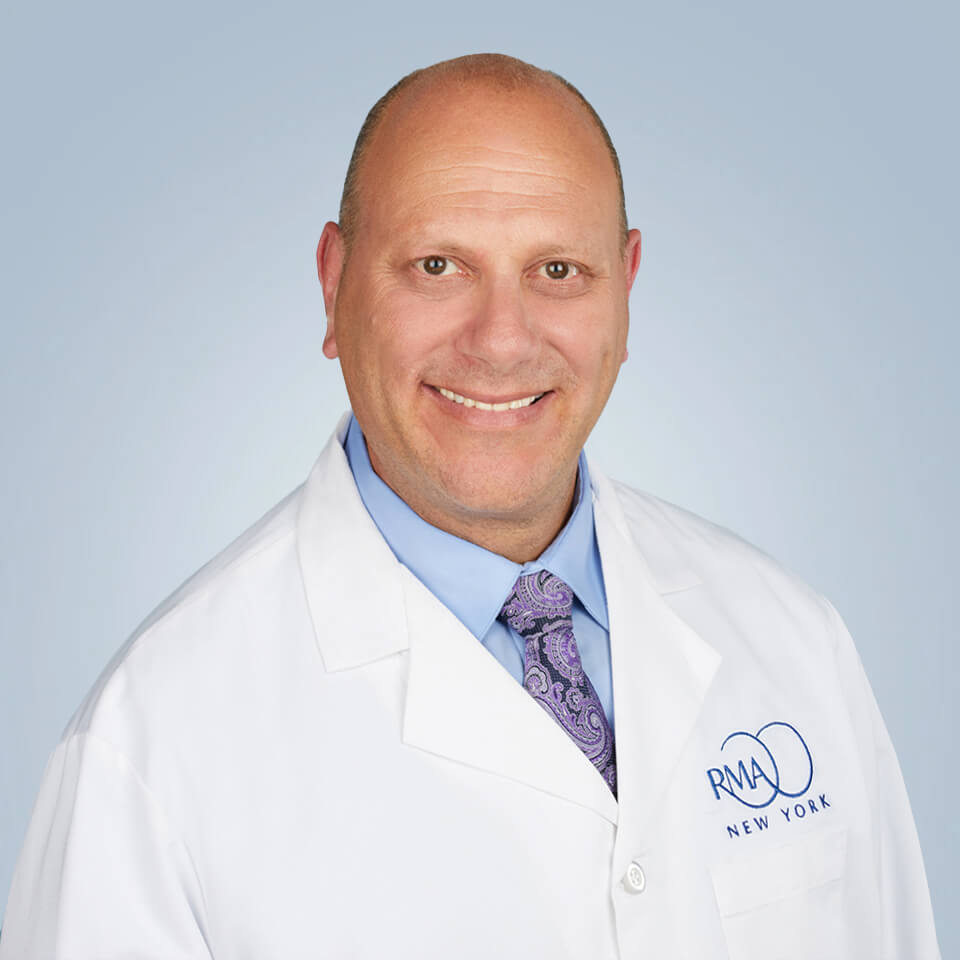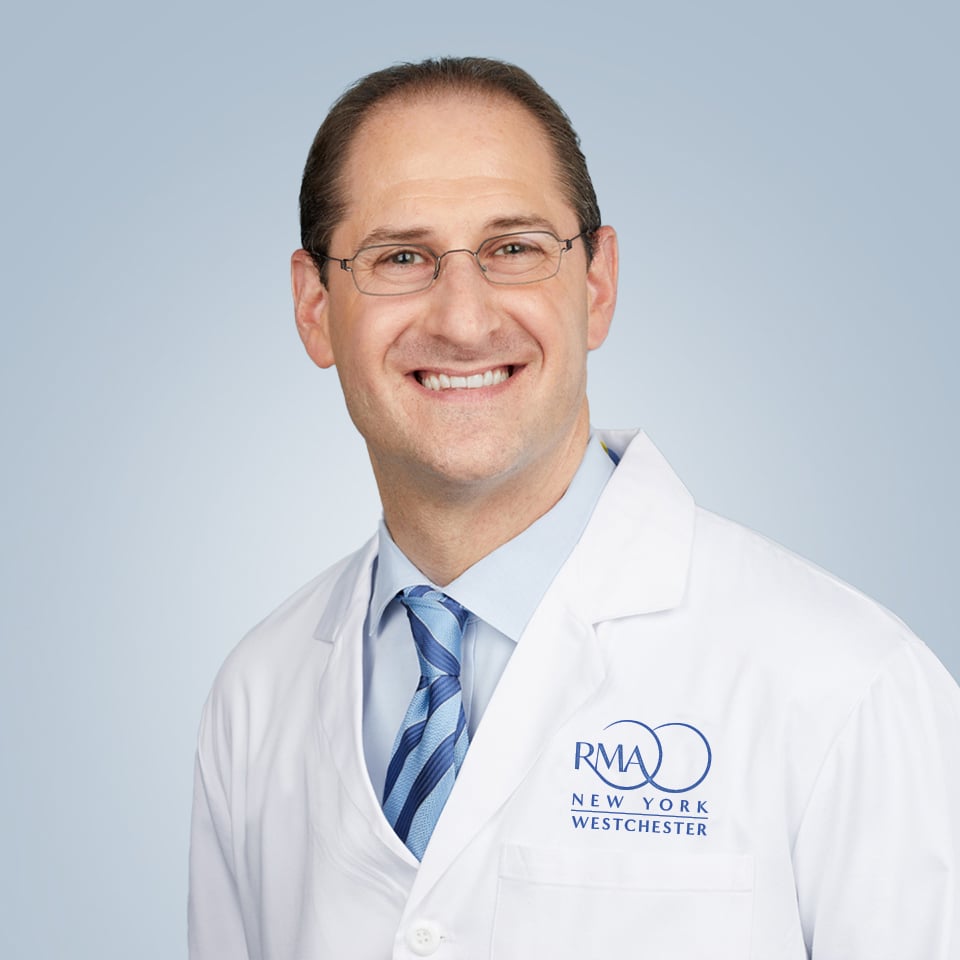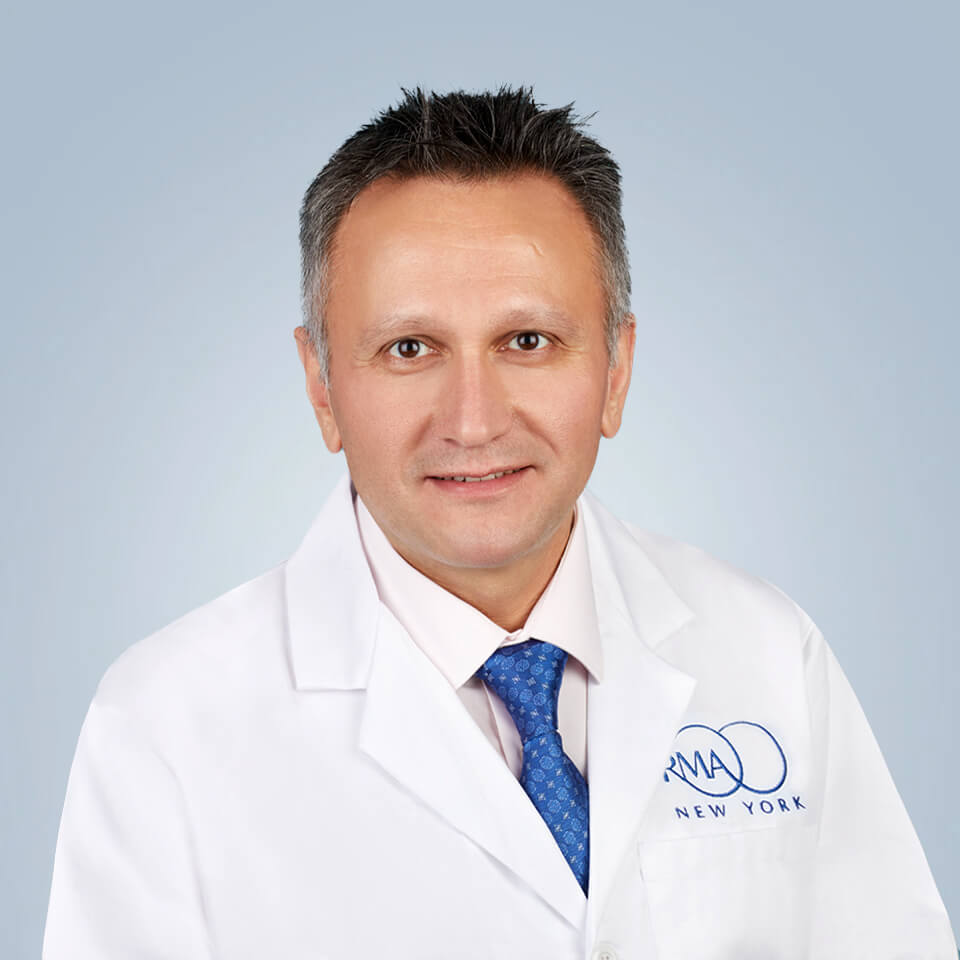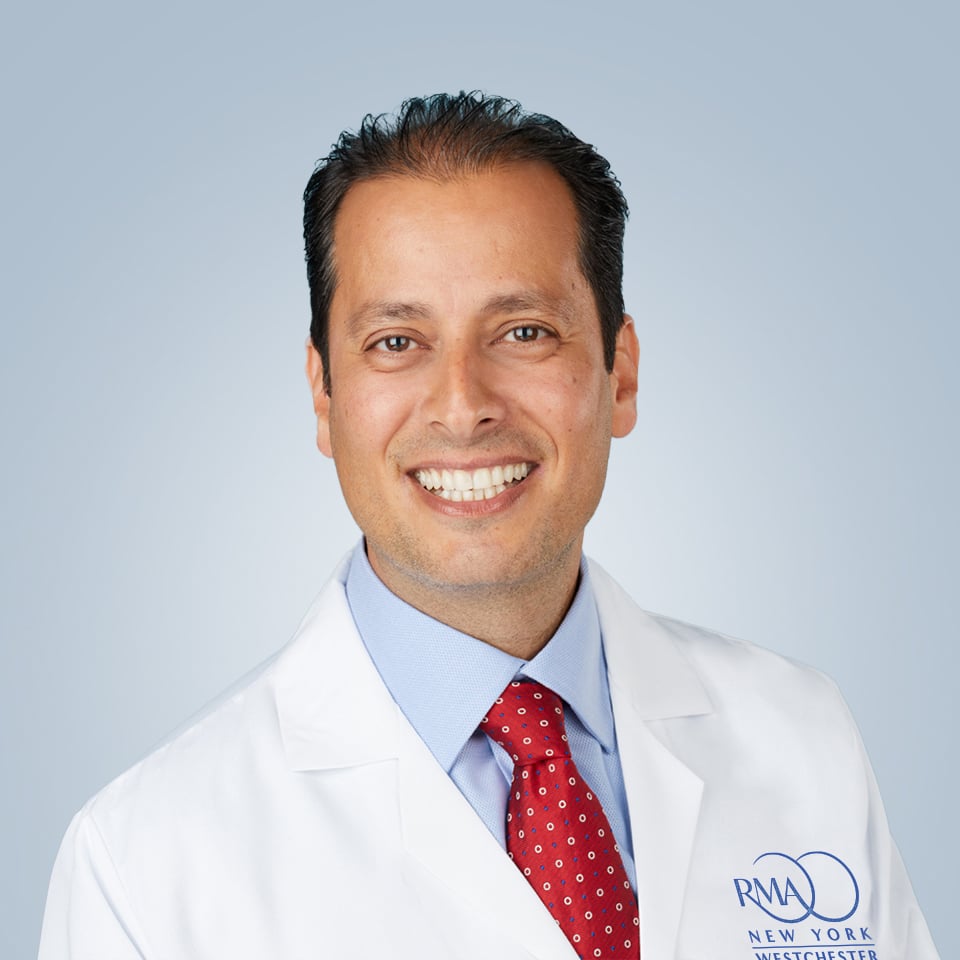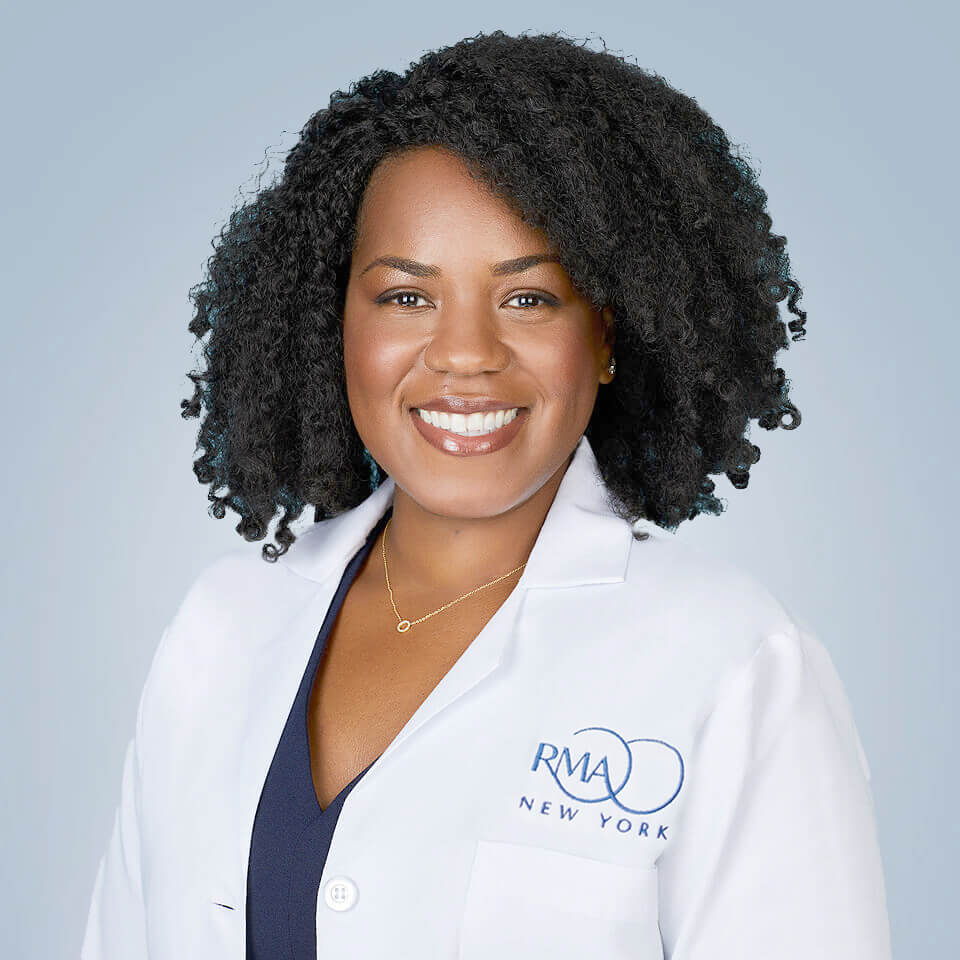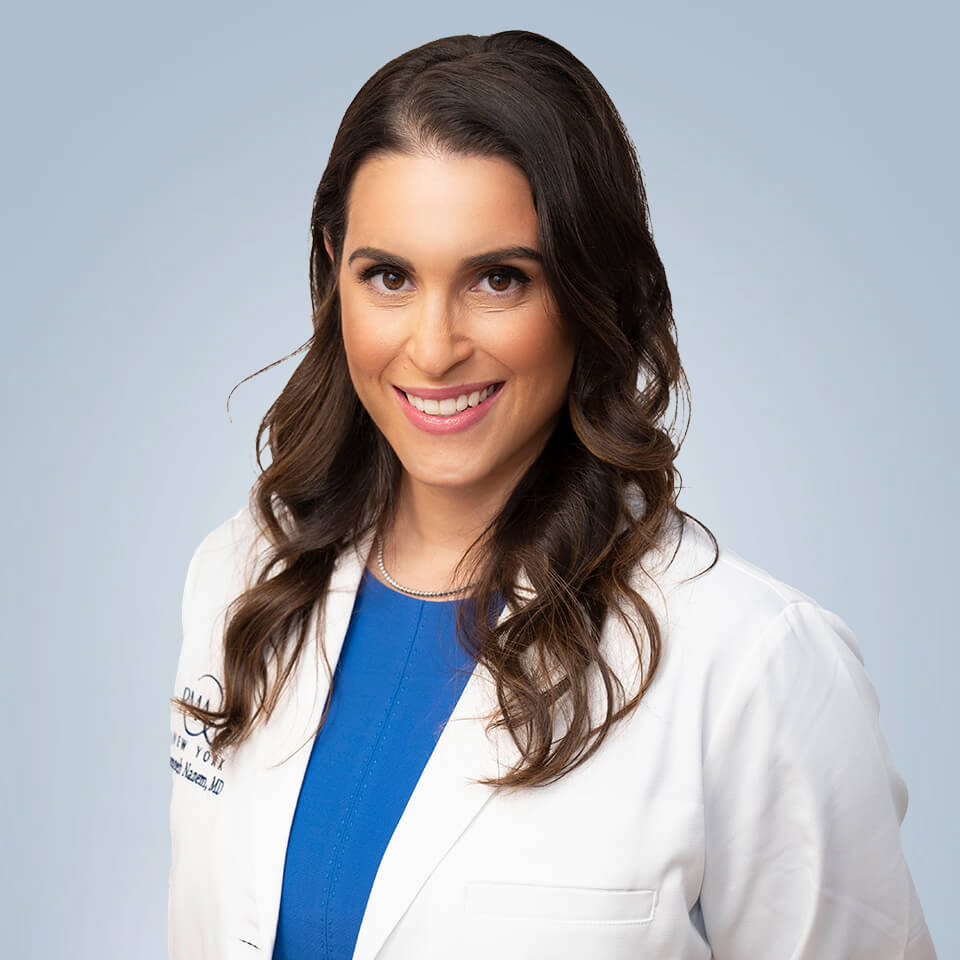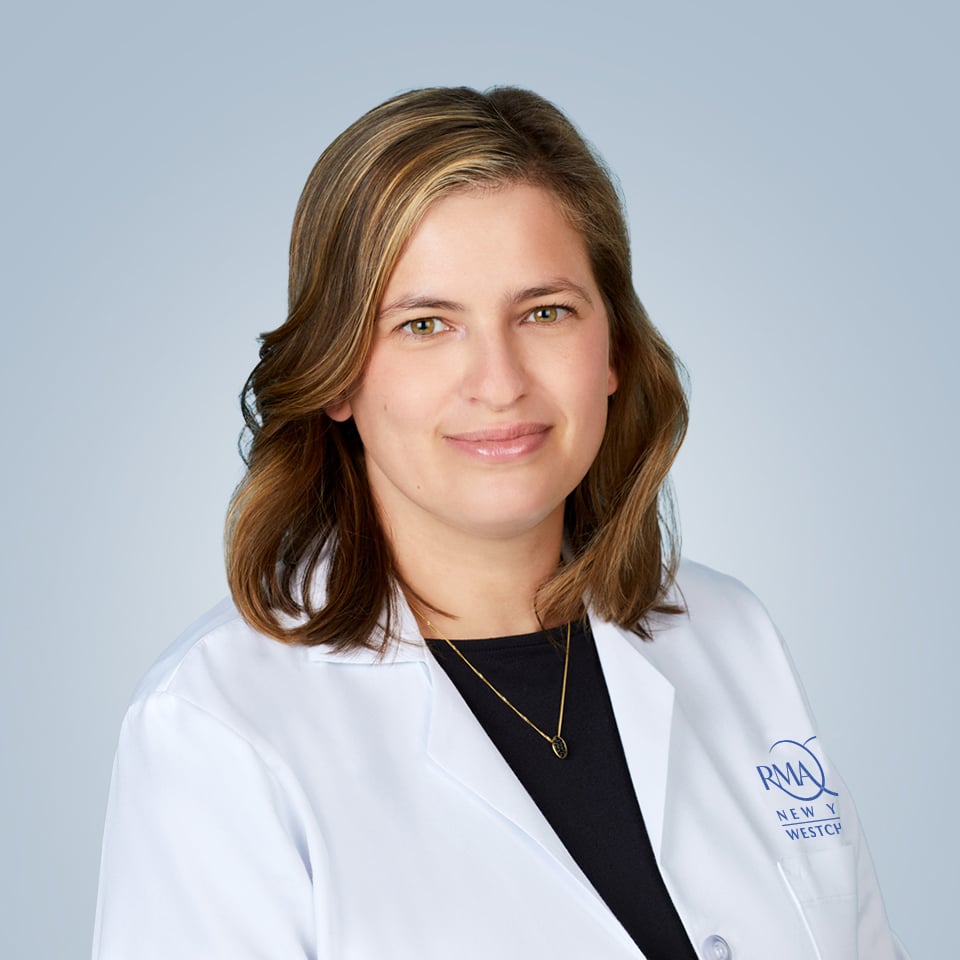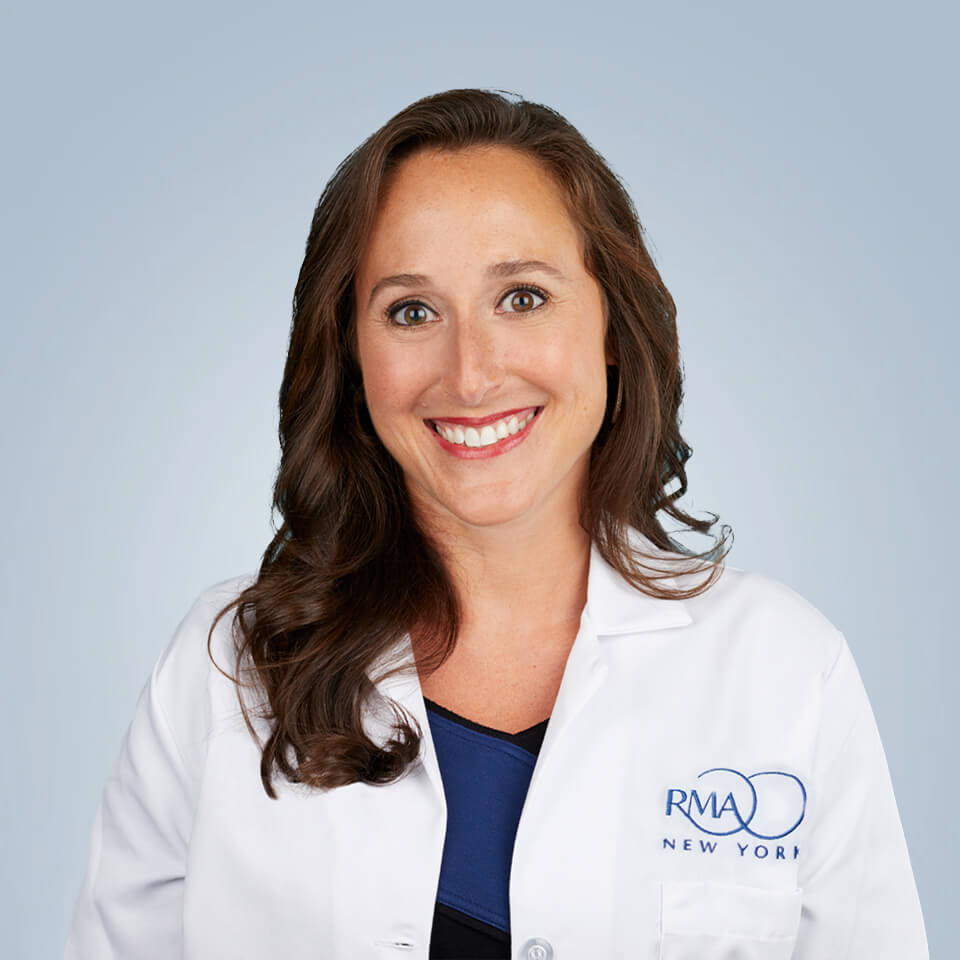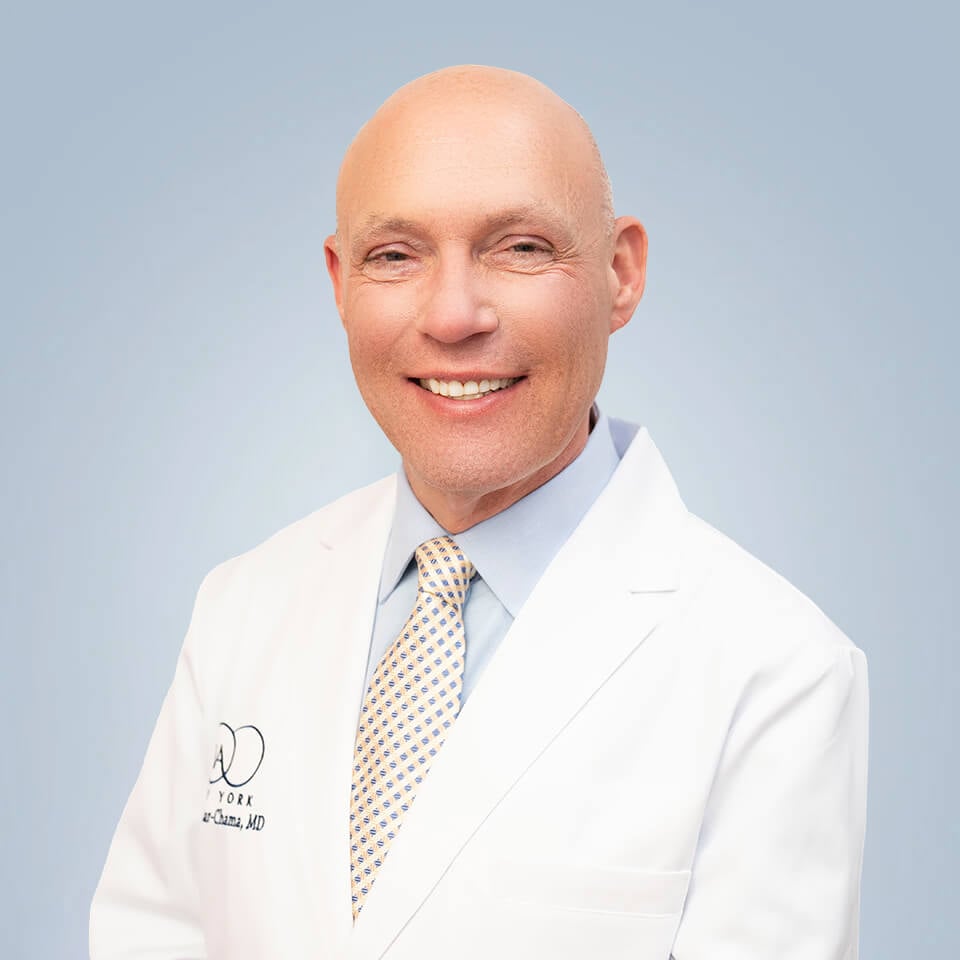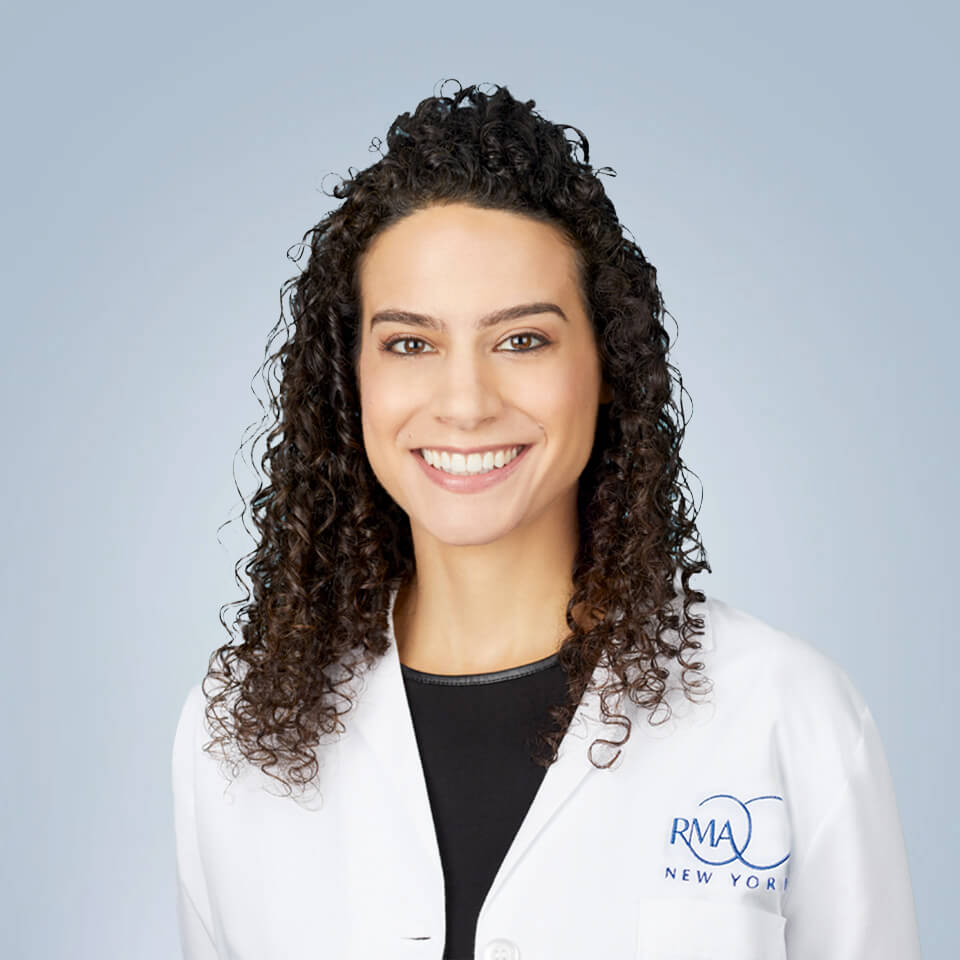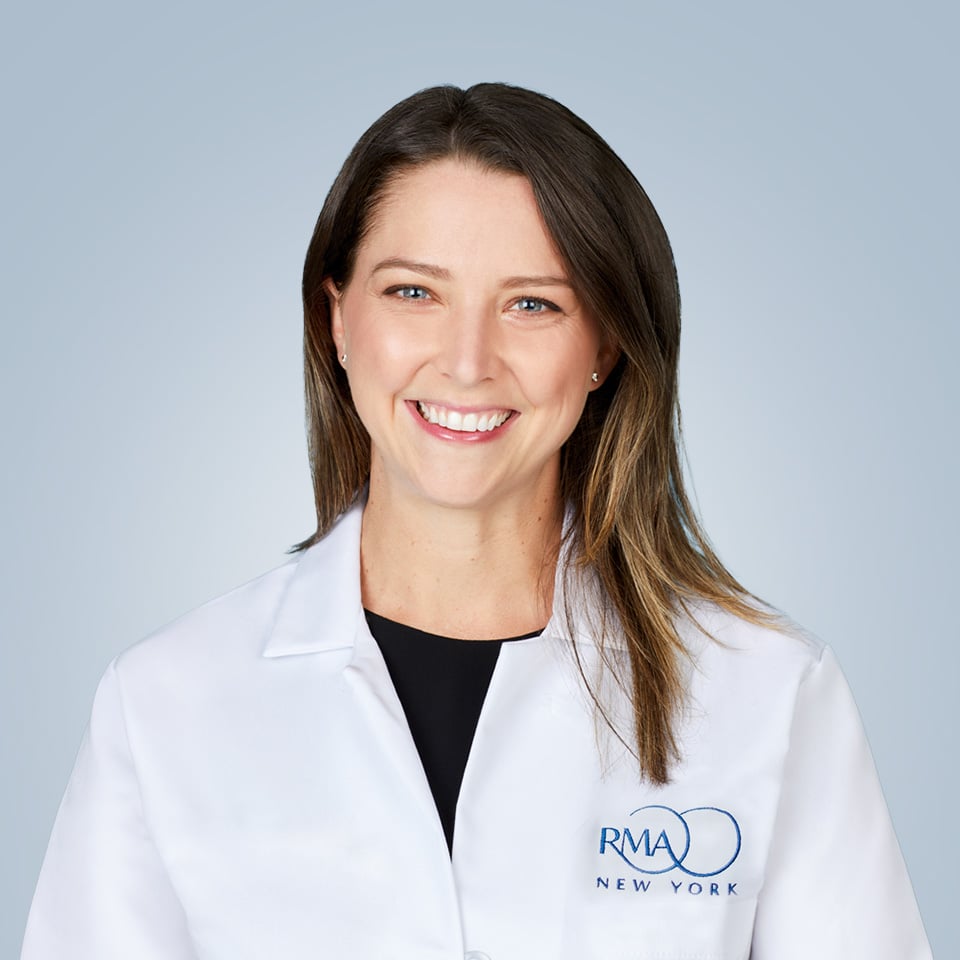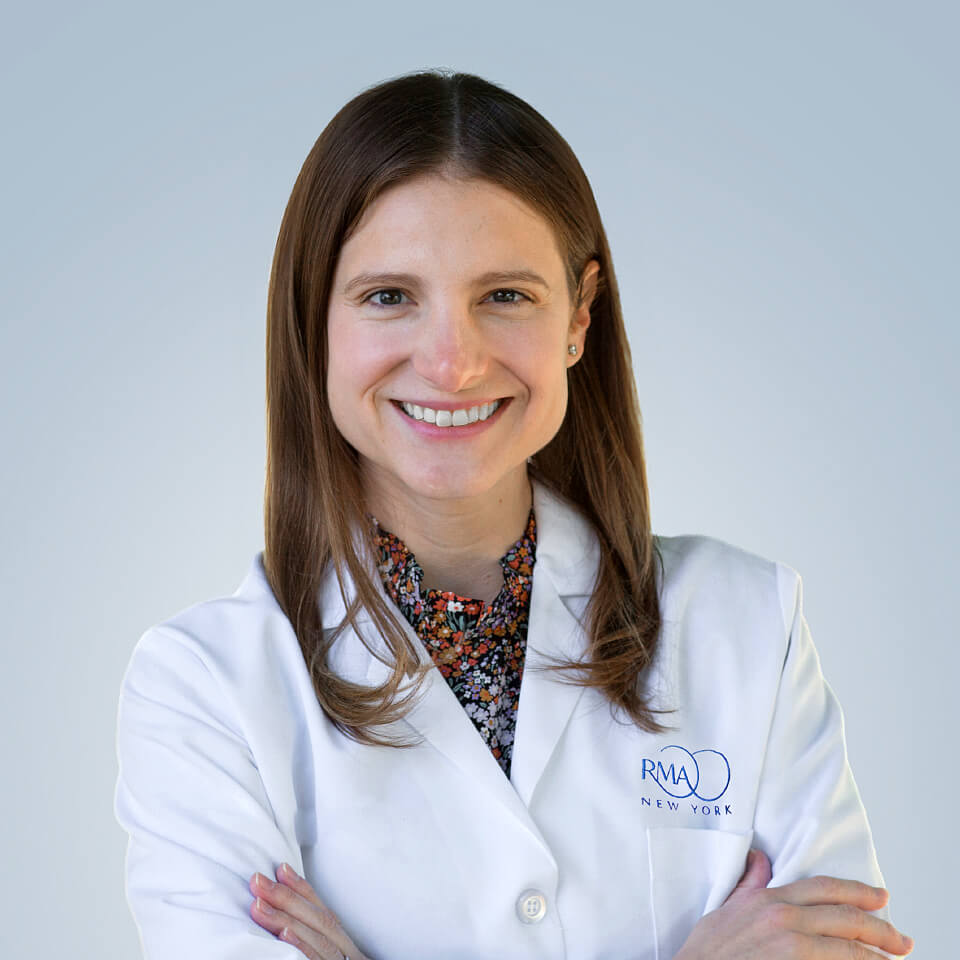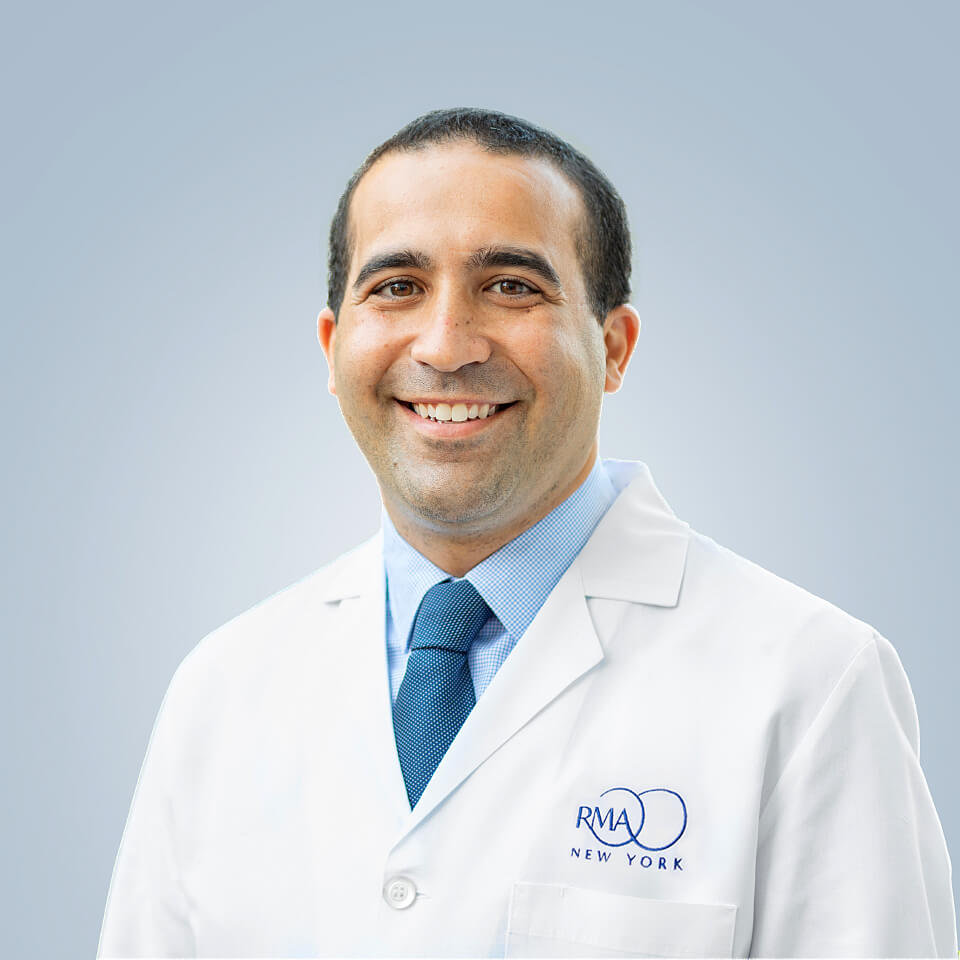

IVF for Gay Men
IVF involves retrieving donor eggs, and fertilizing them in a laboratory using sperm from one or both partners in order to create embryos. A healthy embryo is then placed into the uterus of a gestational surrogate to achieve pregnancy. IVF may be used in conjunction with embryo genetic testing (known as Preimplantation Genetic Testing, or PGT) in order to identify the healthiest embryo for transfer. RMA of New York has helped countless LGBTQIA+ individuals and couples build their families since opening our doors over 20 years ago.
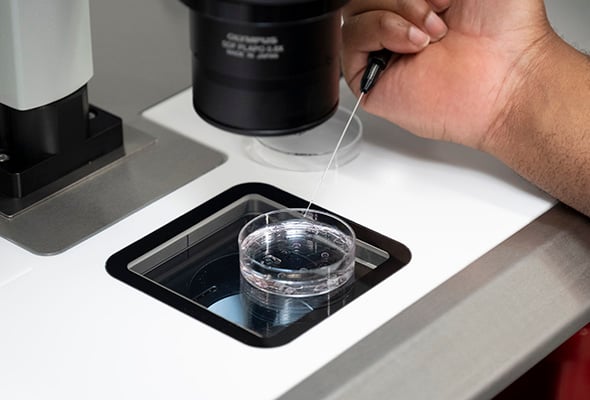
Gay men, same-sex male couples, and couples with two sperm providers who wish to grow their biological families may choose to use IVF. First, a sperm source is identified, which may be your own sperm or that of a donor. Couples may choose to utilize sperm from one or both partners. The next step is selecting an egg donor as well as a gestational surrogate. These are two separate individuals. The egg donor will provide the other half of the genetics of the baby while the gestational surrogate later carries the pregnancy. After medical screenings have been performed and legal documents completed (detailed below), the donor eggs are retrieved and/or thawed and fertilized with sperm inside one of RMA of New York’s 4 on-site embryology laboratories. The embryos are then grown for five to six days (blastocyst stage) prior to either being transferred to the gestational surrogate’s uterus and/or genetically tested using PGT (Preimplantation Genetic Testing) to identify the healthiest embryo for transfer.
IVF Steps for Gay Men:
Step 1: Consultation and Fertility Testing
Prior to beginning fertility treatment, your physician will perform a consultation with you (and your partner, if applicable) to discuss your medical history and family-building goals. You and/or your partner may also undergo a semen analysis. The semen analysis can be scheduled for a time that is convenient for you.
We will also refer you to our partner Aligneage Fertility, a boutique clinic offering personalized and evidence-based andrology services, to complete the sperm testing and screening required by the FDA before use in IVF.
Step 2: Choosing an Egg Donor & Gestational Surrogate
The next step is selecting an egg donor as well as a gestational surrogate.. These are two separate individuals. The egg donor will provide the other half of the genetics of the baby while the gestational surrogate later carries the pregnancy. Egg donors and gestational surrogates must go through medical screenings and complete legal contracts. There are many options and approaches for selecting an egg donor and surrogate, which are detailed below.
![]()
Step 3: Egg Donor Ovarian Stimulation and Monitoring
If you have selected to use eggs from either a non-identified (also called "anonymous") RMA of New York egg donor, or identified (also called "directed" or "known") egg donor, they will take injectable medication to stimulate their ovaries into producing more eggs than usual. During this stage, our physicians perform frequent monitoring (blood work and transvaginal pelvic ultrasounds) to see how their ovaries are responding to the medication and check if any dosage adjustments are needed. When the ovarian follicles containing the eggs reach a certain size, a final "trigger" injection is given to finish growing the eggs before they are removed.
If you have chosen to use eggs from a donor egg bank, such as Donor Egg Bank USA or Fairfax EggBank, the egg donors have already gone through the ovarian stimulation process and frozen donor eggs will be shipped to one of RMA of New York’s 4 full-service IVF laboratory locations.
During this same time period, the gestational surrogate’s menstrual cycle will be monitored and possibly adjusted using medication to align with the timing of the eventual embryo transfer.
![]()
Step 4: Sperm Collection
You and/or your partner will provide a semen sample on the morning of the egg retrieval. If frozen sperm is to be used, the sperm will be thawed and prepared for use in fertilization the day of the egg retrieval.
![]()
Step 5: Egg Retrieval
The egg donor’s egg retrieval procedure will take place at one of our 4 full-service IVF laboratory locations. There is no need to go to a separate hospital. While the egg donor is under light sedation, the reproductive specialist aspirates (extracts) mature eggs from the ovaries via transvaginal pelvic ultrasound guidance. Egg retrieval is a minimally invasive procedure that normally takes less than 15 minutes. People who undergo egg retrieval can typically resume normal activity by the next day.
![]()
Step 6: Fertilization and Embryo Testing
Inside the RMA of New York IVF laboratory, an embryologist will use a high-powered microscope to fertilize the retrieved donor eggs using the provided sperm. Both the egg and sperm are placed together in a petri dish.
Intracytoplasmic Sperm Injection (ICSI)
Intracytoplasmic Sperm Injection (ICSI) Intracytoplasmic sperm injection (ICSI) is used to assist in fertilization. During ICSI, the embryologist injects a single healthy sperm into each egg cell using a very fine needle in order to initiate fertilization. This technique may be used when sperm quantity or quality is an issue, or if there are other known issues with fertilization.Preimplantation Genetic Testing (PGT)
Preimplantation Genetic Testing (PGT) may be performed after fertilization in order to test the embryos for specific genetic abnormalities. During PGT, a very small sample is taken from the embryo and genetically analyzed or sequenced in order to help identify the healthiest embryo for transfer. Embryos are then frozen until the results return.Click here for more information about embryo genetic testing.
![]()
Step 7: Embryo Transfer / Frozen Embryo Transfer
Once healthy, mature embryos have been created, the healthiest embryo is selected to be placed into the gestational surrogate’s uterus. This can be done a few days following the egg retrieval or at a later date by undergoing a frozen embryo transfer (FET). The surrogate may track ovulation to time the embryo transfer or may take fertility medications prior to the embryo transfer to prepare the uterus for optimal implantation.
At the time of embryo transfer, an abdominal ultrasound is used to guide a small catheter through the gestational surrogate’s cervix. The fertility physician then places the embryo into the uterus of the gestational surrogate so that implantation can occur. The procedure is typically painless but can cause mild cramping.
If there are additional viable embryos that are not used during transfer, they can remain frozen for later use. After a week or so, the surrogate will undergo a pregnancy test to confirm pregnancy.
Selecting an Egg Donor
Non-Identified (Anonymous) Egg Donors at RMA of New York
In a non-identified (anonymous) egg donation cycle, the Egg Donation Team at RMA of New York expertly matches the egg recipient with a donor chosen from RMA of New York’s own select egg donor pool. The identities of the donor and recipient are kept anonymous and no identifying information is shared between donor and recipient. Recipients may request to view donor baby photos when available.
Directed or Identified (Known) Egg Donors
A directed or identified (known) egg donor can be a friend or relative who chooses to donate their eggs. A directed egg donor may be someone who was unknown prior to the donation process but chooses to participate as a directed donor. When a recipient chooses to use a known donor, RMA of New York will provide all medical care to both the donor and gestational surrogate.
Agency Egg Donors
RMA of New York works with only New York State licensed egg donor agencies. If a recipient chooses to use an agency egg donor, the RMA of New York Egg Donation Team will coordinate the egg donor’s care with the agency.
Donor Egg Bank Partners
RMA of New York has partnered with Donor Egg Bank USA and Fairfax EggBank to offer our patients the option of choosing eggs previously retrieved and frozen from pre-screened donors. The process provides immediate access to eggs from donors. The use of egg bank donors also eliminates the need for a lengthy “matching” process or for synchronization of the donor’s and surrogate’s menstrual cycles. To find out more about utilizing the services of Donor Egg Bank USA or Fairfax EggBank, please consult with your RMA of New York physician or clinical team.
Selecting a Gestational Surrogate
The search for a gestational surrogate can take up to 6 months. Choosing a surrogate is a very personal decision and there are many factors that should be considered. Gestational surrogates can be known (family member or friend) or compensated (paid through an agency). It is important to identify the right agency and legal representation at the beginning of your family-building process. RMA of New York’s Third Party Team will work closely with you to assist in this process.
Agency Selection
To find a surrogate, the Third Party Team at RMA of New York refers patients to a list of surrogacy agencies. Contacting these agencies and learning about their programs is the first step in this journey. The agencies help guide patients as they view surrogate profiles and aid in finding lawyers for ongoing representation. The agencies review the details of each case and develop a unique contract for each patient that outlines different scenarios. Additionally, the agencies give a breakdown of the different programs they offer and the financial aspects of the entire process. The chosen agency will be responsible for identifying potential surrogates and for performing the in-depth investigation of the surrogate. This includes background checks for the surrogate and any partner/spouse, home visits, criminal checks, and financial checks.
Surrogate Selection
A gestational surrogate candidate is an individual who has given birth to at least one child of their own without complication. Gestational surrogates must live in a stable home environment and have a good health history. They must be within the ages of 21-45 years old and not have a body mass index (BMI) greater than 35 kg/m².
It is important to identify a surrogate that will be aligned with the intended parent(s) views on pregnancy. The surrogate will carry the child as it grows and the surrogate’s decisions can impact the intended child’s development. It is helpful to consider the following questions when choosing a surrogate:
- Where does the gestational surrogate live and where would she deliver the baby?
- Is attending prenatal obstetrician (OB) visits during the pregnancy important to you and will the surrogate be accommodating?
- Will the surrogate allow you to be in the room for the delivery of the baby?
- Does the surrogate have a healthy diet?
- Does the surrogate have the same lifestyle values as you?
- Does the surrogate have a support system in place?
Surrogate Contract and Legal Documents
Before the start of any medical procedures, both the intended parent(s) and the surrogate must work with their legal representation to write, review, and sign a surrogacy agreement. This agreement is legally binding and enforceable in order to best protect the interests and rights of all parties involved.
The surrogacy agreement is a comprehensive document that describes the rights and responsibilities of the surrogate and the intended parent(s). While every surrogacy agreement is different based on state surrogacy laws and each party’s individual needs and circumstances, in general, it should include the following elements:
- The surrogate’s financial compensation
- The risks and liabilities associated with pregnancy
- The surrogate’s responsibilities to take care of herself and the baby throughout the pregnancy
- An agreement on sensitive issues, such as pregnancy termination, should they become necessary
- List of individuals permitted at prenatal appointments and the birth
Surrogate Medical & Psychological Screening
Once the intended parent(s) choose a surrogate and all legal contracts are in place, the surrogate will begin a screening process to ensure that she is able to move forward with an embryo transfer. Both the surrogate and their intimate partner (if applicable) will undergo specific screening as directed by the Food and Drug Administration (FDA) and the American Society for Reproductive Medicine (ASRM). Screening includes:
- Infectious disease testing for the surrogate and partner (if applicable)
- Urine drug screening for the surrogate and partner (if applicable)
- Physical exam of the surrogate
- Saline Sonogram to assess the uterine cavity
- General blood work
- Psychological screening with Dr. Georgia Witkin for the surrogate, partner (if applicable), and the intended parent(s)
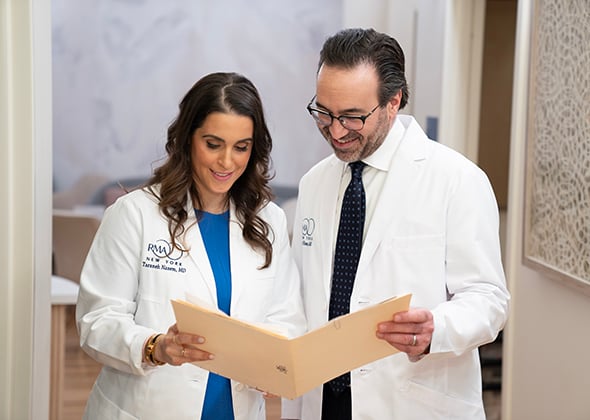
Third-party reproduction using donor eggs and gestational surrogacy is a complex process. RMA of New York’s dedicated and caring team of fertility doctors, nurses, and coordinators are here to guide you every step of the way.
Our dedicated LGBTQIA+ Care Coordinator is available to answer any questions you may have and schedule appointments: lgbtqcc@rmany.com.
Other Treatment Options for Gay Men
Split Cycles for Two Sperm Providers
Very often, both men in a gay couple will wish to be the genetic parents. To achieve this, RMA of New York’s embryologists will perform a split cycle IVF.
Learn MoreEgg Donor Conception for Gay Men
An egg donor will donate eggs to enable another woman to become pregnant. The egg recipient may be the female patient or a gestational surrogate.
Learn MoreGestational Surrogacy for Gay Men
Gestational surrogacy is a process in which an individual, who did not provide the egg used in conception, carries the pregnancy and gives birth to a baby for another person or couple.
Learn More
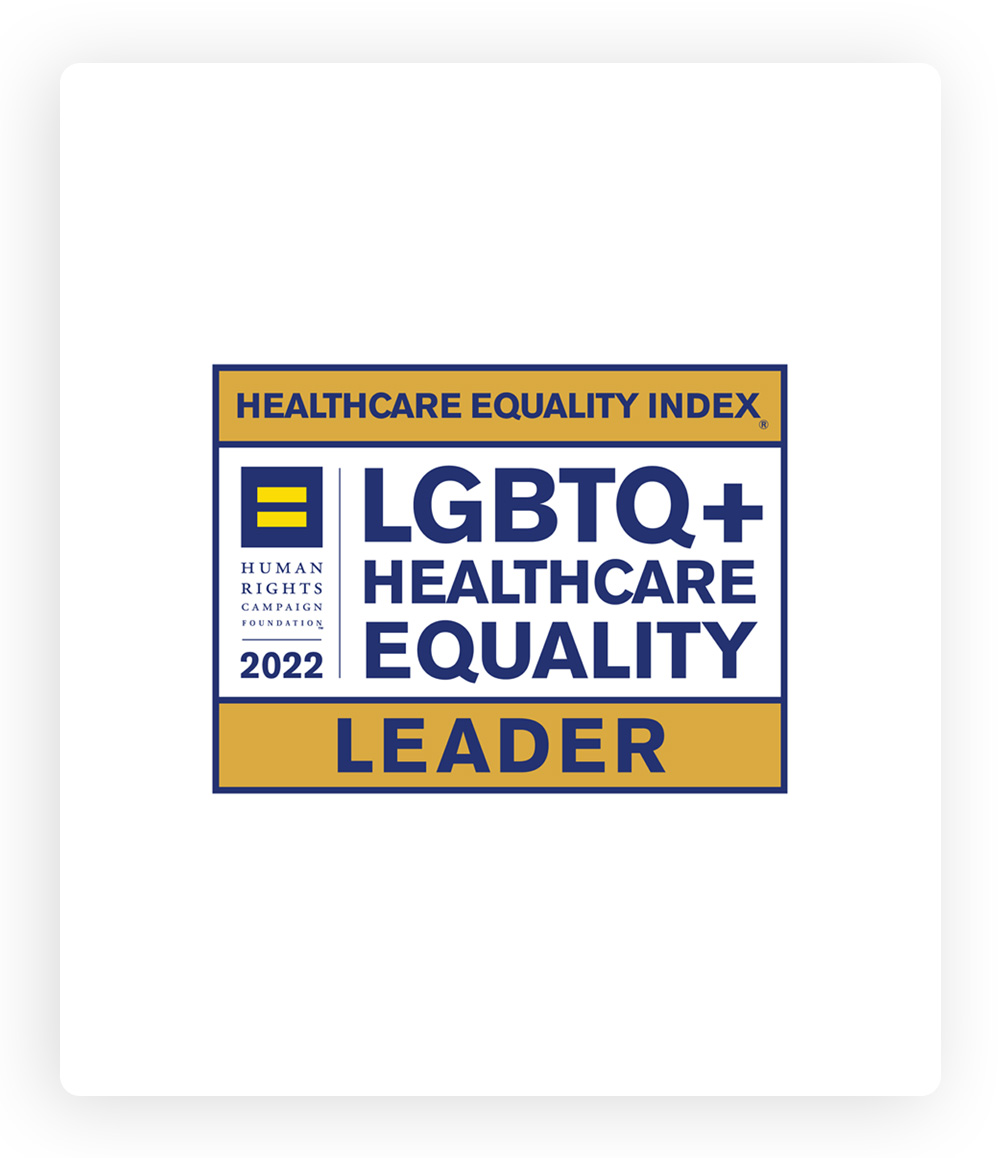
Why RMA of New York: IVF
For over 20 years, RMA of New York has helped countless members of the LGBTQIA+ community preserve their fertility and build the families of their dreams. RMA of New York has been awarded the designation of "LGBTQIA+ Healthcare Equality Leader" by the Human Rights Campaign's Healthcare Equality Index (HEI), the nation's foremost benchmarking survey of healthcare facilities on policies and practices dedicated to the equitable treatment and inclusion of LGBTQIA+ patients, visitors, and employees. RMA of New York is the only fertility clinic based in Manhattan to receive this significant designation.
RMA of New York serves as the Division of Reproductive Endocrinology and Infertility at Mount Sinai Medical System. Our laboratory team is dedicated to scientific discovery, graduate medical education through RMA of New York’s REI Fellowship Program, and individualized care that focuses on you.Our team of embryologists are consistently recognized as innovators in reproductive science and medicine, and security and safety standards.
Featured Resources
![Ep 171: Fertility and Perimenopause Dr. Adrienne Mandelberger]() Podcast
PodcastEp 171: Fertility and Perimenopause Dr. Adrienne Mandelberger
Perimenopause is a topic that is not discussed often enough and having the conversation helps …
Read More![The River Journal: A Journey Through Loss, Hope, and the Miracle of Life: One Couple’s IVF Story]() News & Press
News & PressThe River Journal: A Journey Through Loss, Hope, and the Miracle of Life: One Couple’s IVF Story
A patient of Dr. Rachel Gerber's at RMA of New York’s Westchester practice opens up about her …
Read More![Evaluation and Management of Recurrent Pregnancy Loss]() Blog
BlogEvaluation and Management of Recurrent Pregnancy Loss
Recurrent pregnancy loss (RPL) is commonly defined as two or more clinical miscarriages. RPL is …
Read More
Get Started
It’s never too early to learn about your fertility and reproductive options.
Have questions?
We can help.
Patient-centric reproductive medicine is our specialty, and we look forward to answering any questions you may have.






